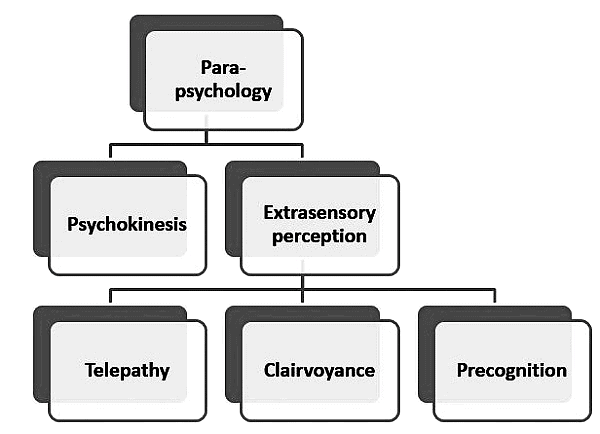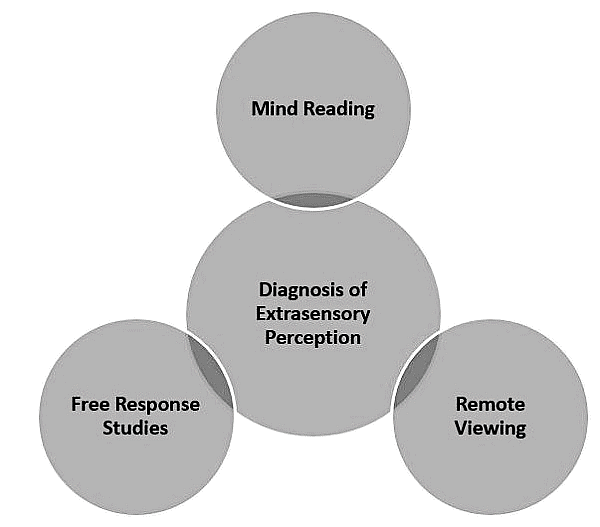Extrasensory perception | Psychology for UPSC Optional (Notes) PDF Download
Introduction
Perception is a fundamental aspect of human cognition, referring to the interpretation and understanding of sensory information. In the field of psychology, perceptual psychology explores the conscious and unconscious processes that shape our perception. While traditionally limited to the five senses, there is a controversial concept known as extrasensory perception (ESP), often referred to as the "sixth sense." This article delves into the definition, history, symptoms, diagnosis, causes, and treatments related to extrasensory perception, shedding light on its meaning and significance.
What is Extrasensory Perception?
Extrasensory perception, or ESP, remains a subject of dispute within the fields of neuroscience and psychology. It encompasses the reception and processing of information that is not acquired through the physical senses but rather sensed by the mind. Coined by Joseph Banks Rhine in 1934, extrasensory perception has been the focus of extensive research aiming to unravel its origins. While some argue that all humans possess a certain degree of extrasensory perception, others maintain that only a select few individuals possess this special power.
Parapsychology
Parapsychology explores extraordinary situations, behaviors, and experiences that defy conventional explanation. It can be divided into two main branches:
- Psychokinesis: Refers to events that occur without the involvement of any living beings.
- Extrasensory Perception: Involves perceptions that the brain receives or communications that occur without the participation of the five sensory organs.
The Different Facets of Extrasensory Perception
Extrasensory perception can be further categorized into three distinct types:
- Precognition: It involves having knowledge about future events without any logical explanation. Individuals may experience precognition while awake or during dreams, often leading to feelings of uncertainty, depression, and anxiety.
- Clairvoyance: This type of extrasensory perception entails an awareness of unknown objects or events without any prior contact or knowledge. It defies scientific explanation and often manifests in emotional and physical signs.
- Telepathy: Telepathy refers to communication between individuals who are geographically separated and lack feasible forms of prior contact. It occurs predominantly among individuals connected through bonds of love or affection and involves sharing thoughts, emotions, and sensations.

The Historical Development of Extrasensory Perception
The term "extrasensory perception" gained popularity in the 1930s when J.B. Rhine, a psychologist at Duke University, established a research facility dedicated to studying the sixth sense. Rhine's groundbreaking work involved experiments using "Zener cards," where participants were asked to identify symbols without seeing the cards themselves. Contrary to the expected 20% success rate, individuals consistently surpassed this probability. Rhine's research faced both criticism and curiosity, yet it played a pivotal role in the establishment of parapsychology as a field of study. In 1957, Rhine founded the Parapsychological Association, an organization that continues to investigate psychic phenomena to this day.
Symptoms and Diagnosis of Extrasensory Perception
The various types of extrasensory perception present themselves in distinctive ways, often accompanied by specific symptoms. These include:
- Precognition: Individuals experiencing precognition may have vague knowledge or premonitions about upcoming events. These experiences can be distressing, leading to feelings of depression and nervousness.
- Telepathy: Telepathy is most commonly observed between individuals who share close emotional bonds. Close friends, relatives, or married couples may experience unexplained communication that transcends sensory organs. Such interactions involve emotional and physical signs that cannot be scientifically explained.
Diagnosis of Extrasensory Perception
To diagnose extrasensory perception, several methods have been employed:
- Mind Reading: Forced-choice experiments, pioneered by J.B. Rhine in the 1930s, involve using cards with symbols, numbers, or alphabets. Participants are asked to identify the content by observing the experimenter. This approach aims to assess an individual's ability to perceive information beyond conventional sensory channels.
- Free Response Studies: These studies create an environment resembling dream or hallucination states. By reducing internal brain noise, individuals may enter altered states of consciousness, potentially enhancing extrasensory perception.
- Remote Viewing: This form of free response study involves an experimenter and a patient. The patient is driven to an undisclosed location, while the experimenter remains unaware of the destination. The patient's ability to perceive and identify the location without prior information is then evaluated.

Causes and Treatment of Extrasensory Perception
Parapsychologists attribute extrasensory perception to specific activities in the brain. Research has sought to identify the precise brain regions associated with extrasensory perception, with evidence suggesting the involvement of the right hemisphere. Additionally, emotional trauma resulting from displacement or the loss of a loved one can trigger episodes of extrasensory perception.
Treating extrasensory perception involves psychiatric counseling to help patients understand and cope with their unusual experiences. Psychiatrists analyze each case individually, confirming the precognitive nature of the patient's experiences. Patients may exhibit physical symptoms similar to those experienced by others, even when separated by time and geography. Addressing any emotional trauma and exploring the potential connection to extrasensory perception is crucial in these cases.
Conclusion
In conclusion, extrasensory perception represents a paranormal ability to perceive information beyond conventional sensory channels. Considered the "sixth sense," extrasensory perception has been the subject of extensive study. The causes, symptoms, diagnoses, and treatments discussed here shed light on this intriguing phenomenon. Perception itself is a vital cognitive process that influences our understanding of the world, shaped by attitudes, expectations, behavior, motivation, and interests.
|
165 videos|205 docs
|

|
Explore Courses for UPSC exam
|

|
















